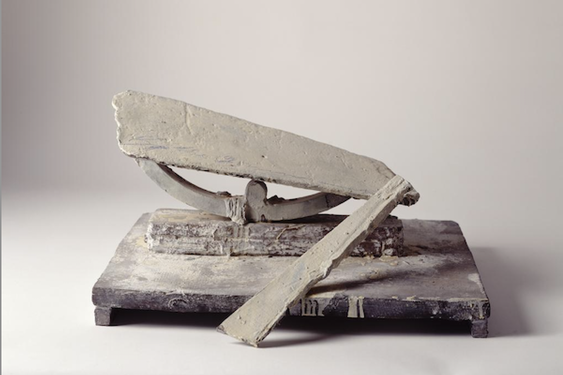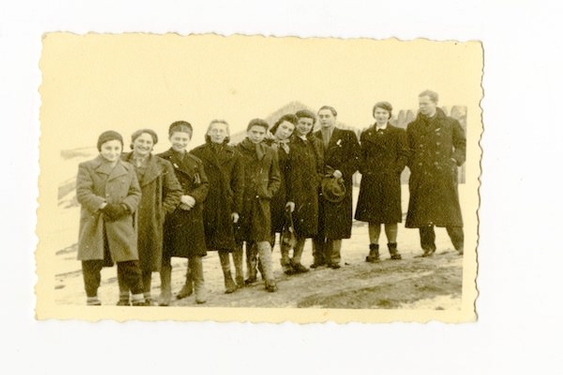Cy Twombly (1928-2011) was an American abstract expressionist painter, sculptor and photographer, who in 1959 settled in Rome to pursue his craft. He was educated at the Museum of Fine Arts in Boston and Black Mountain College where he was influenced by the artists Franz Kline and Robert Muterwell. In the contemporary art world, he belonged to the generation of Robert Rauschenberg and Jasper Johns. During this time, Andy Warhol was creating art out of brands and Ed Ruscha was doing his own version of pop art, while Twombly's work was influenced by the art, sculpture, poetry and mythology of Ancient Greece and Rome.
Thus, we understand why The Getty Center known for its collections and exhibitions on antiquities would host the contemporary exhibit, "Cy Twombly - Making Past Present." The exhibition (thru October 30, 2022) explores Twombly's lifelong fascination with the ancient Mediterranean world through evocative groupings of his paintings, drawings, prints and sculptures from the mid-20th to the early 21st century, tracing an imaginative journey of encounters with and responses to ancient texts and artifacts. The presentation includes sculpture from the artist's personal collection, and on public display for the first time along with some sculptures peppered into the exhibit from The Getty's own collection.
Twombly's technique uses a combination of paint brush strokes, pencils and wax crayons. The results have been described as scribble, graffiti or something a child can do, however, his work is so much more. For example, Twombly's Il Parnasso (1964) is an abstract interpretation of Raphael's fresco, The Paranassus. In Twombly's version of the scene, he replaces the three dimensional icons from antiquity, the renaissance and mythology that appear on Mount Parnassus. Instead those figures are represented by their names, which are hidden through what looks like a chaotic display of Twombly's work. And, that's where you start to get Twombly. He was a student of antiquity, who read and deciphered ancient Latin texts. And, here in the present, a viewer of Il Parnasso is left to decipher Twombly's own work. It can be painstaking, something Twombly had to encounter in his own studies as he deciphered ancient texts.
Twombly's same techniques apply to Leda and the Swan (1962), the Greek myth that Zeus who (in the form of a swan) rapes Leda, an Aetolian princess, who became a Spartan queen. Twombly's abstract painting shows a lot more than scratches or childlike behavior. Instead, there is a method to the madness. It's like a Pollock painting, but instead of a drip painting technique, there's a rhythm and repetition in Twombly's mania as he interprets this Greek storyline through his intense scribbles that represent the mythology, antiquity, eroticism and the violent act of rape. But, as you poke around the explosiveness of Twombly's painting you see Leda's seductive body parts and Twombly's words popping out on the canvas. It's a volatile painting which represents a transformative period in the artist's career.
My favorite part of the exhibit was Twombly's Room in Rome, a 1966 photo mural by Horst P. Horst that was used for Vogue Magazine. This was a groundbreaking photographic moment in interior design as it captured Twombly mixing contemporary art with his antiquity sculpture collection. Twombly was a collector of Greek and Roman sculptures (both ancient and reproductions) and placed the busts along with his own artwork and other contemporary artists such as Andy Warhol. Twombly had a habit of rearranging the sculptures throughout his villa. It is said that that he felt the sculptures talked to each other, and in a sense Twombly's home was a three dimensional piece of artwork on its own. The curator of the exhibit replicated Twombly's own interior curation by mounting the Horst's image on an entire wall of the gallery and placed Twombly's sculpture collection in front of the image, in an utterly dazzling style.
While journeying through Twombly's art collection, I was drawn to how the sounds of words and names (such as Tacitus, the Roman historian/politician) had emphasis in his work, which seemed somewhat unusual for an abstract artist. His use of color in his later art also captivated me in addition to his own sculptures and photography. Twombly was a shy man, who didn't do many interviews but there's plenty of information about him online, especially when it comes to analyzing his work. As a result, be prepared to put in the work before you view this exhibition, which is a lot more complex and meaningful than "scribble on paper."
To reserve tickets to this exhibit, visit the getty.edu.





